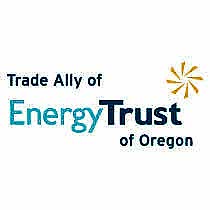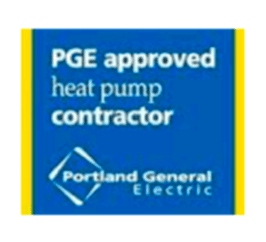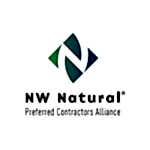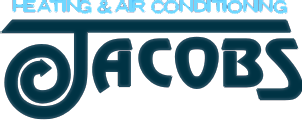Does your furnace keep turning on and off and not completing a full heating cycle? This issue known as short cycling, not only prevents your home from staying comfortably warm but also stresses the furnace components, leading to increased wear and tear, higher energy bills, and a shortened lifespan for the system.
Understanding the cause of this issue is key to fixing it and ensuring your furnace operates efficiently. This guide will walk you through everything you need to know—from the normal behavior of a furnace to common causes of your furnace turning on and off, DIY fixes, and when to call in the pros.
Normal Furnace Cycle
When trying to diagnose your furnace, It’s helpful to understand what a normal heating cycle looks like. Typically, a functioning furnace cycles on and off a few times an hour, maintaining your set temperature with ease. During colder weather, it may cycle a bit more, but this is expected. Slightly elevated gas bills are also normal during winter months as your furnace works to keep your home comfortable in the colder months.
Signs of Issues with Your Furnace
If your furnace is struggling, there are several warning signs to watch for. Ignoring these can lead to bigger issues, so it’s important to address them promptly. Keep an eye out for the following indicators:
- A sudden and unexplained increase in your gas bill.
- Uneven or insufficient heating, leaving areas of your home cold.
- Strange noises like rattling, banging, or squealing from the furnace.
- Frequent cycling or difficulty maintaining the desired temperature.
This last one on the list – short cycling – is when your furnace turns on and off repeatedly in short intervals without fully heating your home. This irregular pattern is often a sign of an underlying issue that needs addressing.
Common Causes of Short Cycling
There are several reasons why your furnace keeps turning on and off. Here are the most common culprits:
1. Thermostat Issues
The Problem: A malfunctioning thermostat can cause confusion in temperature regulation, leading your furnace to cycle unnecessarily.
Signs to Look For:
- Large discrepancies between the set temperature and actual room temperature.
- A thermostat located in an area with fluctuating temperatures, like near a draft or in direct sunlight.
2. Clogged Air Filters
The Problem: Dirty or clogged filters restrict airflow, causing your furnace to overheat and shut off as a safety measure.
Signs to Look For:
- Weak or uneven airflow from vents.
- Higher electricity bills, caused by motor strain.
- Increased dust accumulation in your home.
3. Improperly Sized Furnace
The Problem: If your furnace is too large or too small for your home, it will struggle to maintain consistent temperatures, resulting in frequent cycling.
Signs to Look For:
- Uneven heating across rooms.
- Persistent cycling from day one of installation.
4. Blocked Vents or Ductwork
The Problem: Blockages in vents or ducts reduce airflow, making it harder for your furnace to operate efficiently.
Signs to Look For:
- Cold spots in specific rooms.
- Little to no airflow from certain vents.
5. Flame Sensor Issues
The Problem: A dirty or faulty flame sensor can cause your furnace to shut off prematurely.
Signs to Look For:
- The furnace ignites but shuts down within seconds.
- A flashing error code on your furnace’s control panel.
DIY Fixes for a Furnace Turning On and Off
Here’s how you can take matters into your own hands and address some of the more manageable causes of short cycling:
1. Check and Adjust Your Thermostat
A thermostat works by sensing room temperature and signaling your furnace or air conditioner to turn on or off, maintaining your desired comfort level efficiently. As a crucial part of your HVAC system, your thermostat needs occasional maintenance to ensure it’s functioning correctly. If your furnace seems to be turning on and off erratically, start by checking the thermostat settings.
- Ensure it’s set to “Auto” rather than “On.” The “On” setting leaves the fan running constantly.
- Replace thermostat batteries if needed.
- Ensure the thermostat is in a central, draft-free location. Relocation may require professional help, but simple adjustments or recalibration are doable for most homeowners.
- Replace an old thermostat that has reached the end of its life.
2. Replace or Clean Air Filters
Air filters are a critical component of your HVAC system. They trap dirt, dust, and other debris from circulating through your home. Over time, air filters become clogged and dirty, reducing airflow and efficiency. Regular filter maintenance is an easy DIY task that can improve furnace performance.
- Check your furnace filter every 30 days and replace it if it’s clogged or dirty. Most filters should be replaced or cleaned every 1–3 months, depending on usage.
- If you have pets or live in a dusty area, consider replacing filters more frequently to maintain optimal performance.
3. Inspect Vents and Ducts
Restricted or blocked vents are a common culprit of furnaces turning on and off. Limited airflow forces the furnace to work harder than necessary and can result in overheating. It’s essential to regularly inspect your vents and ducts to ensure proper ventilation.
- Make sure all vents are open and clear of any obstructions, such as furniture or debris.
- Vacuum visible vent covers to eliminate dust build-up.
- Check for any tears or leaks in the ductwork that may be restricting airflow. This should be repaired by a professional.
- Consider getting your air ducts professionally cleaned every few years to remove built-up dirt and debris.
4. Clean the Flame Sensor
A flame sensor is a crucial safety component in a furnace, designed to detect the presence of a flame. It prevents gas buildup by shutting off the system if no flame is detected.
A dirty flame sensor can disrupt furnace operation by failing to detect the flame, causing the system to shut down unexpectedly. This compromises safety, efficiency, and consistent heating performance.
- Turn off your furnace power supply first to ensure safety.
- Locate the flame sensor (near the burners) and gently clean it with fine-grit sandpaper or a cloth. If you’re uncomfortable completing this step, a professional can do it for you.
5. Improper Furnace Size
Choosing the right furnace size is essential for efficient heating, energy savings, and long-term performance. An oversized furnace wastes energy, while an undersized one struggles to meet demand. An undersized furnace struggles to provide adequate heating for your home, leading to consistent performance problems. Since the furnace lacks the capacity to meet the heating demands, it needs to work harder to maintain the desired indoor temperature. The wrong furnace size can lead to:
- Frequent Cycling: An oversized furnace may turn on and off repeatedly in short intervals, known as short cycling, leading to inefficiency and unnecessary wear and tear.
- Uneven Heating: If certain parts of your home are too hot while others remain cold, it could indicate an incorrectly sized furnace.
- High Energy Bills: An oversized or undersized furnace has to work harder than necessary, which can drive up energy costs.
- Struggling to Reach Set Temperature: An undersized furnace may fail to maintain or reach the temperature set on your thermostat, particularly during colder weather.
- Excessive Noise: A furnace that is too large may produce louder operation noises due to forced airflow.
- Constant Operation: An undersized furnace may run continuously without cycling off, attempting to meet the home’s heating demands.
If you suspect improper sizing is the issue, consult a professional HVAC technician. While this isn’t something you can DIY, identifying the problem will help you take action to prevent long-term inefficiencies.
When to Call a Professional
While many short cycling issues have simple fixes, some problems are best handled by experts. Here’s when you know it’s time to call for help:
- The furnace still short cycles after changing filters or troubleshooting your thermostat.
- You notice unusual sounds, such as banging, clicking, or hissing.
- There are error codes or blinking lights on the control panel.
- The furnace won’t turn on at all or consistently struggles to maintain heat.
A licensed HVAC technician can accurately diagnose the problem and ensure your furnace is running as safely and efficiently as possible.
The Importance of Regular Maintenance
You can keep your furnace running efficiently with regular maintenance of your HVAC system. Simple tasks like checking thermostat settings, replacing air filters, and inspecting vents can prevent costly repairs and ensure optimal performance.
Prevention is always easier than repair, and regular furnace maintenance can save you from dealing with short cycling (or worse). Scheduling annual tune-ups with an HVAC professional ensures components like filters, flame sensors, and ductwork are in top shape and extends the life of your furnace.
Furnace Maintenance and Repair in Portland
A furnace that keeps turning on and off can be frustrating, but fixing the issue doesn’t have to be. Whether it’s a clogged filter, a thermostat in need of recalibration, or something more complex, troubleshooting the problem early can protect your furnace from long-term damage.
If you’re struggling with furnace issues, Jacobs Heating and Air Conditioning is here to help. Our team of experienced HVAC professionals can quickly identify the root cause and get your heating system up and running smoothly.Schedule your service with us today and enjoy a warm, comfortable home all winter long.










